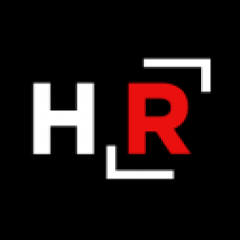Three Strategies to Transform Your Talent Agenda in the Era of Remote Work
The future of talent acquisition is here. How can HR foster growth and build high performing teams while working remotely? We share 3 strategies to transform your talent agenda.

If your organization transitioned employees to a remote work environment in response to the COVID-19 pandemic, it’s likely that you have now settled in for the long haul. Given that, your leadership may well be grappling with key questions around this new era of virtual workforce management.
Within HireRight, our Human Resources practice is built on four pillars: Attracting, Investing, Aligning and Enabling. During the COVID-19 pandemic, we’ve been guided by these pillars in our global pivot to remote work. Beyond refining our processes for virtual recruiting and onboarding, we have also been considering key questions around the employee experience, including: How can we foster growth and build high-performing teams while working remotely during a time of crisis?
In response to that question, our HR team has focused on several strategies to continue opportunities for advancement, foster collaboration, and ultimately keep our employees engaged. Here is a look at three of these strategies that have made a difference for our team – and that may help your organization in the year to come.
Strategy One: Focus on Talent Investment
As any HR professional knows, identifying and engaging high-potential employees is key to boosting critical talent retention. Keeping those employees engaged stems from identifying and creating transparent opportunities that align to their desired career growth.
Within HireRight, we are focused on enabling our team with easy-to-access tools for continuous development. Making these tools available in a clear and consistent way is even more important in today’s virtual work environment. Tools that you can use to engage high-potential employees include:
Individual Development Plans (IDPs) – At their best, IDPs are a framework to help your team members to plan, track and achieve both professional and personal development goals. They are most effective at helping employees visualize and reach specific career goals, as well as metrics for improving performance. Encourage every employee in your organization to fill out an IDP and track their progress against those goals for the coming year.
Career Mapping & Progression – When it comes to reaching longer-term development goals, career mapping answers the question, “How?” A good career map offers concrete steps that employees can take to build on their achievements and move forward, ultimately allowing team members to own their own career development. Make your career maps available as a resource that employees can use to chart how they intend to reach their goals.
Ongoing Performance Conversations – The contents of a performance review should never be a surprise to your team members. Instead, encourage managers to have regular conversations in which they provide feedback to their teams and give their employees the opportunity to address concerns and ask for assistance.
Strategy Two: Build Opportunities for Cross-Pollination
In today’s climate, spending on development programs like conferences and continuing education may not be a top priority. Instead, your organization may benefit from a focus on creating natural synergies that allow for exposure to new challenges, opportunities to build relationships and achieve growth for your team members.
Benefits of such “cross-pollination programs” include collaboration with other internal business units, opportunities to gain added experience in project execution and management, and meaningful chances to drive results within your organization. Additionally, employees will gain exposure to added areas of work that may be of interest. You can support cross-pollination efforts by:
Creating Cross-Functional Teams – Tackling larger issues through the creation of teams that draw members from across your organization benefits not only your business, but also the employees participating in those teams. Cross-functional teams give employees the opportunity to impact change and boost their profiles and skill sets.
Sharing Relevant Information – Consistent communication across teams and throughout your organization is essential to supporting effective cross-pollination. Incorporate global employee Town Halls and specific team All Hands meetings, as well as newsletters and consistent intranet updates, to support collaboration and help team members connect and learn from each other.
Strategy Three: Cultivate Meaningful Employee Connections
Creating platforms for remote teams to connect professionally and socially is essential in virtual environment. Resources such as Employee Affinity/Resource Groups are one way to create meaningful opportunities for team members to connect and share around issues that are important to them.
These groups can focus on any topic and offer a variety of authentic engagement opportunities at a global scale. Within HireRight, we offer affinity groups related to Women’s Leadership, Black Lives Matter, PRIDE, Working Parents, and other topics. Other tactics to engage your remote workforce include:
Enhanced Networking Opportunities – You can use Employee Affinity Groups, or just schedule other meetings and opportunities for discussion and authentic connection around book clubs, podcasts, webinars, or other topics relevant to your organization.
Show Appreciation – Within HireRight, we have an internal employee recognition platform through which anyone can celebrate the achievements of their team members. Similarly, I encourage your organization to seek out opportunities for employees to express authentic appreciation for their colleagues’ work – which ultimately boosts engagement.
Focus on the People – Whenever possible, sharing the stories of the people behind your wins, solutions and initiatives goes a long way toward boosting engagement. After all, at the end of the day, people are interested in other people – even virtually.
It can be hard to form a cohesive corporate culture and keep employees connected and engaged during this era of remote work. However, by using these strategies you can keep an engaged workforce as you confront the challenges ahead. 2021 is your year to embrace the virtual hiring process – learn more about focusing on reducing time to hire, and mitigating risk within your workforce going forward.
Release Date: February 23, 2021

HireRight
HireRight is a leading provider of on-demand employment background checks, drug and health screening, and electronic Form I-9 and E-Verify solutions that help employers automate, manage and control background screening and related programs.